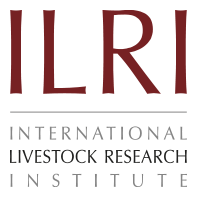J.M. Ojango1,3 N. Mpofu 1 4 K. Marshall and L. Andersson-Eklund2
1International Livestock Research Institute (ILRI), PO Box 30709, Nairobi 00100, Kenya
2Swedish University of Agricultural Sciences (SLU), Dept. of Animal Breeding and Genetics, PO Box 7023, SE-75007 Uppsala, Sweden (sections 1.4 and 6)
3Egerton University, Department of Animal Sciences, PO Box 536, Njoro, Kenya
4Lupane State University, Bulawayo, Zimbabwe
Quantitative methods are research techniques and methods dealing with numbers and anything that is measurable. This module reviews the most commonly used quantitative methods in the area of animal breeding and animal genetic resources (AnGR). The module primarily addresses topics of relevance to scientists in the area of AnGR in developing countries, including both faculty in universities/colleges and staff in research institutions.
The core text includes links [green] and references to other parts of the AnGR Training Resources (CD), such as exercises, module texts, compendia and case studies. There are also links [blue] and references to literature and websites.
- Quantitative methods—Important tools for AnGR
- Data collection and management
- Statistical models for data analyses
- Estimating non-genetic effects
- Estimating genetic effects
- Mapping quantitative trait loci (QTL)
- Measuring genetic diversity from molecular data
- Genetic relationships between populations
- References
- Related literature
- Websites
Citation
Module 4: Ojango J.M., Mpofu, N., Marshall, K. and Andersson-Eklund L. 2011.Quantitative methods to improve the understanding and utilisation of animal genetic resources In:Animal Genetics Training Resource, version 3, 2011. Ojango, J.M., Malmfors, B. and Okeyo, A.M. (Eds). International Livestock Research Institute, Nairobi, Kenya, and Swedish University of Agricultural Sciences, Uppsala, Sweden









